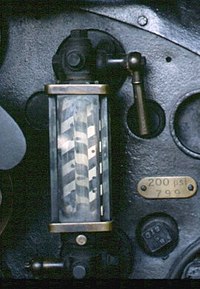
Photo from wikipedia
Abstract The effectiveness of high-level waste vitrification at Hanford's Waste Treatment and Immobilization Plant may be limited by precipitation/accumulation of spinel crystals [(Fe, Ni, Mn, Zn)(Fe, Cr) 2 O 4… Click to show full abstract
Abstract The effectiveness of high-level waste vitrification at Hanford's Waste Treatment and Immobilization Plant may be limited by precipitation/accumulation of spinel crystals [(Fe, Ni, Mn, Zn)(Fe, Cr) 2 O 4 ] in the glass discharge riser of Joule-heated ceramic melters during idling. These crystals do not affect glass durability; however, if accumulated in thick layers, they can clog the melter and prevent discharge of molten glass into canisters. To address this problem, an empirical model was developed that can predict thicknesses of accumulated layers as a function of glass composition. This model predicts well the accumulation of single crystals and/or small-scale agglomerates, but excessive agglomeration observed in high-Ni-Fe glass resulted in an underprediction of accumulated layers, which gradually worsened over time as an increased number of agglomerates formed. The accumulation rate of ∼53.8 ± 3.7 μm/h determined for this glass will result in a ∼26 mm-thick layer after 20 days of melter idling.
Journal Title: Journal of Nuclear Materials
Year Published: 2017
Link to full text (if available)
Share on Social Media: Sign Up to like & get
recommendations!